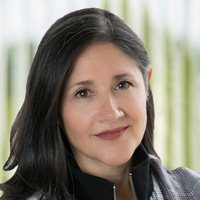The Next Silicon Valley Must-Have? A Private Foundation
Today’s wealthy tech crowd is steering more toward philanthropy than conspicuous consumption, and a private foundation gives them the power (and the control they are looking for) to make a difference.


While the pandemic might have shuttered businesses across the country, Silicon Valley tech companies have defied the odds. In 2020, IPO capital raising hit its highest level in a decade. Start-up valuations soared, and blockbuster IPOs, like the one for Airbnb, created a bumper crop of wealth. But unlike previous iterations of newly minted money, the beneficiaries of this recent boom are forsaking the traditional private-island-and-jet splurge. Their new acquisition of choice could be a more charitable one.
Last year my company helped set up more new foundations than at any other time in our 20-year history – many for tech entrepreneurs and business owners planning for a liquidity event. And we expect that the ongoing wave of IPOs could fuel a surge in private foundation philanthropy, even as Brookings, NPR and others have documented a decline in spending among America’s most affluent households during the past year.
What, No Gold-Plated Yacht?!
Boom times in Silicon Valley used to be marked by lavish displays of excess, including the now-legendary wedding of Napster co-founder Sean Parker whose 2013 “Lord of the Rings” nuptials cost $4.5 million and featured a 9-foot-high cake and guest apparel by the film’s costume designer. So, why aren’t the beneficiaries of the current boom acquiring sharks with laser beams and other accessories for Bond-villain subterranean lairs?
From just $107.88 $24.99 for Kiplinger Personal Finance
Become a smarter, better informed investor. Subscribe from just $107.88 $24.99, plus get up to 4 Special Issues

Sign up for Kiplinger’s Free Newsletters
Profit and prosper with the best of expert advice on investing, taxes, retirement, personal finance and more - straight to your e-mail.
Profit and prosper with the best of expert advice - straight to your e-mail.
One possibility is that economic uncertainty has put a damper on lavish displays of conspicuous consumption. As recently reported in The Wall Street Journal, the so-called “smart money” is bearish on companies that have gone public through special purpose acquisition vehicles (SPACs). Short-sellers have increased their bets to more than triple their value at the start of the year, rising from $724 million to about $2.7 billion. And broadly speaking, no one is sure whether the post-COVID economy will be characterized by unprecedented growth or inflation and sluggish employment rates.
Other factors, however, may be inspiring Silicon Valley’s latest crop of millionaires to seek gratification in philanthropy instead of consumerism:
Heightened awareness of increased need: While the gap between America’s haves and have-nots has been widening for decades, the gulf grew even wider during the pandemic. The weight of the crisis fell unequally on the vulnerable, with millions of Americans unable to afford or access even essentials such as food, health care, housing and broadband. Against a backdrop of endless lines for food pantries — even on military bases — extravagant displays of wealth may seem insensitive as well as immoderate.
An attitude of gratitude: Aaron Rubin, a partner at Werba Rubin Papier Wealth Management, told The New York Times that this boom feels qualitatively different from previous ones. In addition to experiencing unease about the economy, his clients are expressing “more gratitude” and making more plans for charity.
Social crisis: In addition to COVID, racial equity, social justice and the political environment were at the fore of our national conversation. These topics got people thinking about how they could use their assets to influence society positively.
Generational generosity: Many Silicon Valley “techies” are Millennials. Fidelity Charitable’s survey, Entrepreneurs as Philanthropists, shows that in comparison to other generations, Millennials are relatively more philanthropic, more concerned about using their social capital and purchasing power to improve the world, and more interested in aligning their actions with their ideals. And they’ve been very responsive to the increased need as of late.
Additionally, nearly three-quarters of Millennials have sent financial aid to family or friends or donated to a nonprofit since the pandemic began, according to payment app Zelle’s September Consumer Payment Behaviors report. That’s the highest rate among any of the generations polled.
The Tesla of Charitable Vehicles
It’s easy to see how the next wave of entrepreneurial business IPOs could fuel an explosion of interest in philanthropy; what’s less clear is how that interest will manifest. Although Silicon Valley has a very robust community foundation that serves the surrounding vicinity, not all of its Millennial philanthropists are likely to be content with solely meeting need locally. Nor may they be satisfied with giving only through a donor-advised fund (DAF), which, while popular for its tax advantages and ease of set-up, does not offer donors much say over their giving.
Consider these critical insights to how Millennials approach their giving, noted by the Fidelity Charitable survey:
- While they are more likely than other generations to see giving as part of their identity, they also may have lower levels of trust in the nonprofits they support and are more likely to want to be actively engaged in the direction and use of their financial support.
- Younger entrepreneurs see charitable giving as a way to build their reputation, with 84% saying they value giving as an opportunity to demonstrate leadership in the community.
- Seventy-four percent value having their contributions recognized publicly, compared to only 19% of Boomers.
- Millennial business owners are already planning their charitable legacies; nearly two-thirds plan to leave money to charity after they’re gone, versus 46% of Boomers.
The same study also notes that “Younger entrepreneurs are going beyond simple cash donations — both personally and in their businesses — and are giving in increasingly sophisticated ways.”
For all these reasons, a private foundation, which confers complete donor control and offers an almost limitless toolbox for creative giving, might emerge as the preferred charitable vehicle for this new class of donors who crave hands-on, out-of-the box philanthropy.
In addition to granting to publicly supported nonprofits, the type of giving permitted with a DAF, a private foundation is empowered to:
- Give directly to individuals in need.
- Make loans to charitable organizations and use the proceeds from the repayments to make other programmatic investments.
- Invest in for-profit businesses to further a charitable purpose.
- Conduct its own charitable programs and activities.
- Give awards and prizes to spur progress.
- Enter into binding agreements with grant recipients to ensure they use the funds as intended.
- Dictate naming rights as part of a grant agreement and enforce adherence.
- Deliver grant checks in person (e.g., at a fundraising gala).
- Follow any investment strategy that complies with prudent investor rules.
Moreover, because a private foundation can be established to exist in perpetuity, handed down from one generation to the next, it might have a special appeal for techies who are intent on building an enduring personal legacy associated with lifelong philanthropy and social impact.
For some great examples of charitable efforts made through private foundations, visit here.
Foundation Source is the nation’s largest provider of management solutions for private foundations. We empower people and companies to create a better world with their philanthropy through a configurable suite of administrative, compliance, and advisory services complemented by purpose-built foundation management technology and private foundation experts. As we celebrate our 20th year of service, Foundation Source supports nearly 2,000 family, corporate and professionally staffed foundations of all sizes and has enabled more than $7 billion in charitable grants. ©2021 Foundation Source Philanthropic Services, Inc. All rights reserved.
Profit and prosper with the best of Kiplinger's advice on investing, taxes, retirement, personal finance and much more. Delivered daily. Enter your email in the box and click Sign Me Up.

Hannah Shaw Grove is the chief marketing officer of Foundation Source, founder of "Private Wealth" magazine and author of 11 data-based books and hundreds of reports and articles on topics relating to the creation, management, disposition and transfer of wealth. Hannah has previously been the chief marketing officer at Apex Clearing, iCapital Network and Merrill Lynch Investment Managers and is a cum laude graduate of Harvard University. She holds the FINRA Series 6, 7, 24, 26 and 63 licenses.
-
 The Retirement Donor's Checklist: Key Deadlines by Gift Type
The Retirement Donor's Checklist: Key Deadlines by Gift TypeRetirees have some charitable contribution options that can help avoid spikes in income from RMDS and capital gains.
-
 Cooler Inflation Supports a Relief Rally: Stock Market Today
Cooler Inflation Supports a Relief Rally: Stock Market TodayInvestors, traders and speculators welcome much-better-than-hoped-for core CPI data on top of optimism-renewing AI earnings.
-
 Are T-Mobile's Prepaid Perks a Home Run or a Strikeout?
Are T-Mobile's Prepaid Perks a Home Run or a Strikeout?T-Mobile's prepaid lineup promises MLB.TV, T-Mobile Tuesdays and hotspot data. But do the perks make it worth switching?
-
 5 Smart Things to Do With Your Year-End Bonus, From a Financial Professional
5 Smart Things to Do With Your Year-End Bonus, From a Financial ProfessionalAfter you indulge your urge to splurge on a treat, consider doing adult things with the extra cash, like paying down debt, but also setting up a "fun fund."
-
 Are You a Gen X Investor? Here's How You Can Protect Your Portfolio From an AI Bubble
Are You a Gen X Investor? Here's How You Can Protect Your Portfolio From an AI BubbleAmid talk of an AI bubble, what's the best course of action for investors in their 50s and 60s, whose retirement savings are at risk from major market declines?
-
 Hey, Retirees: Put Your Charitable Gifts in a Donor-Advised Fund (and Enjoy Your Tax Break)
Hey, Retirees: Put Your Charitable Gifts in a Donor-Advised Fund (and Enjoy Your Tax Break)A donor-advised fund is a simple (really!), tax-smart strategy that lets you contribute a large, tax-deductible gift now and then distribute grants over time.
-
 If You're a U.S. Retiree Living in Portugal, Your Tax Plan Needs a Post-NHR Strategy ASAP
If You're a U.S. Retiree Living in Portugal, Your Tax Plan Needs a Post-NHR Strategy ASAPWhen your 10-year Non-Habitual Resident tax break ends, you could see your tax rate soar. Take steps to plan for this change well before the NHR window closes.
-
 Your Year-End Tax and Estate Planning Review Just Got Urgent
Your Year-End Tax and Estate Planning Review Just Got UrgentChanging tax rules and falling interest rates mean financial planning is more important than ever as 2025 ends. There's still time to make these five key moves.
-
 What Makes This Business So Successful? We Find Out From the Founder's Kids
What Makes This Business So Successful? We Find Out From the Founder's KidsThe children of Morgan Clayton share how their father's wisdom, life experience and caring nature have turned their family business into a respected powerhouse.
-
 I'm a Financial Adviser: The Fed's Rate Cuts Could Have Impacts You Might Not Anticipate
I'm a Financial Adviser: The Fed's Rate Cuts Could Have Impacts You Might Not AnticipateUnderstanding how lower interest rates could impact your wallet can help you determine the right financial moves to make.
-
 Past Performance Is Not Indicative of Your Financial Adviser's Expertise
Past Performance Is Not Indicative of Your Financial Adviser's ExpertiseMany people find a financial adviser by searching online or asking for referrals from friends or family. This can actually end up costing you big-time.